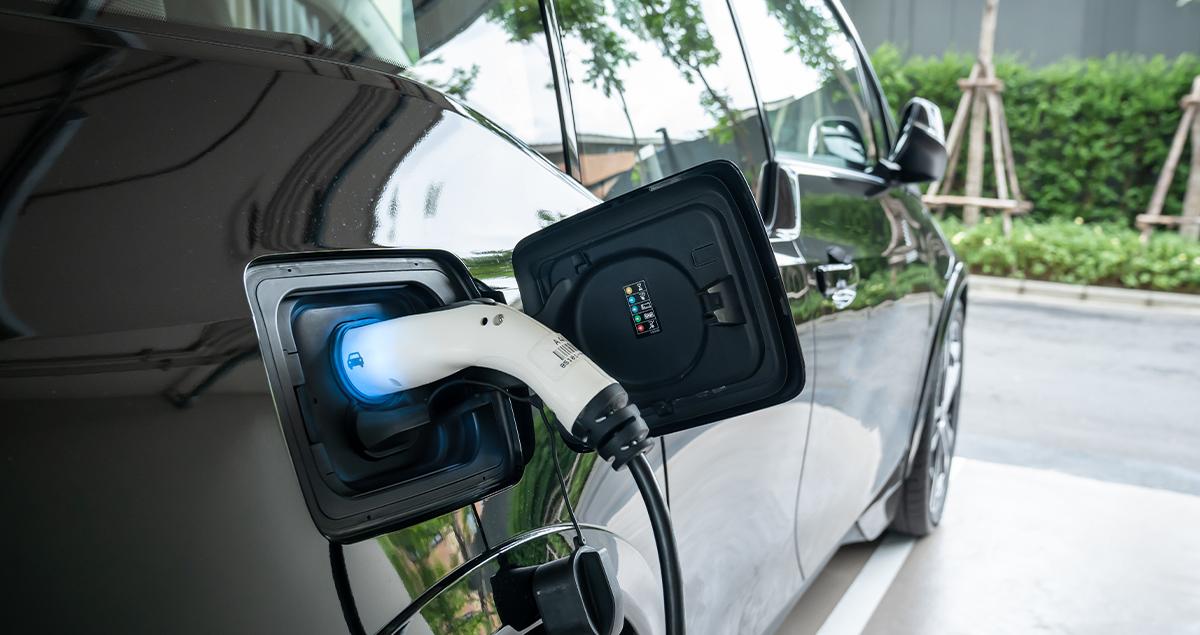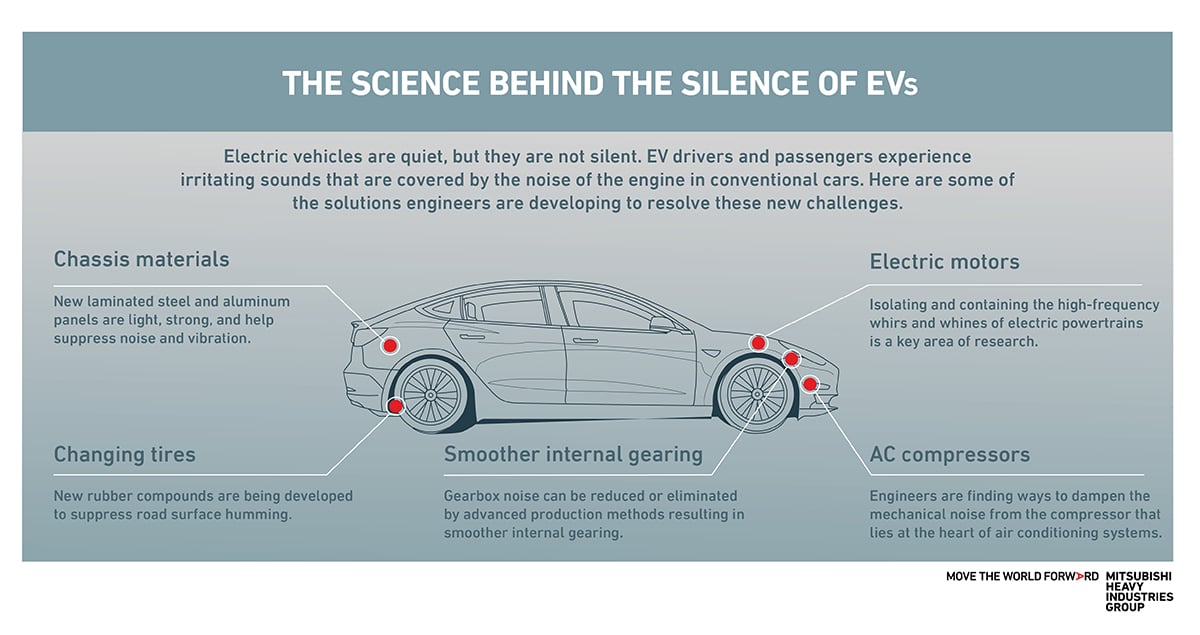The science behind the silence of EVs

Electric vehicles are quiet, but they are not, strictly speaking, silent. In fact, EV drivers and passengers can experience a host of whirs, clanks and groans that in a conventional car would be masked by the background noise of the engine.
Invasive sounds emanating from engine stop-start mechanisms, electric motor generators, and power unit switching systems, among other components, can detract from the driving experience and could undermine the appeal of electric vehicles.
With the bulk of the automotive sector’s production due to switch from petrol and diesel engines to electric and hybrid powertrains in the coming decade, Noise, Vibration and Harshness (NVH) experts are working hard to resolve these engineering challenges.
This graphic looks at some of the solutions making the EV ride quieter, which impact every part of the vehicle, from chassis to gearbox.

EV chassis need to be light but strong to maximize battery efficiency. New laminated steel and aluminum panels are lightweight, sturdy, and work to suppress both noise and vibration.
Using advanced production techniques, smoother internal gearing systems can be made to reduce gearbox noise, high frequency whines from electric powertrains can be isolated, and the humming produced by a vehicle’s AC compressor damped down to reduce disturbance.
Innovative rubber compounds are being developed, too, to suppress the sound of the tires as they run along the surface of the road.
These are just a few examples of how the science of silence is finding new ways to let EV drivers travel in peace.
Read more about the engineering challenges of EVs Download our free eBook.




